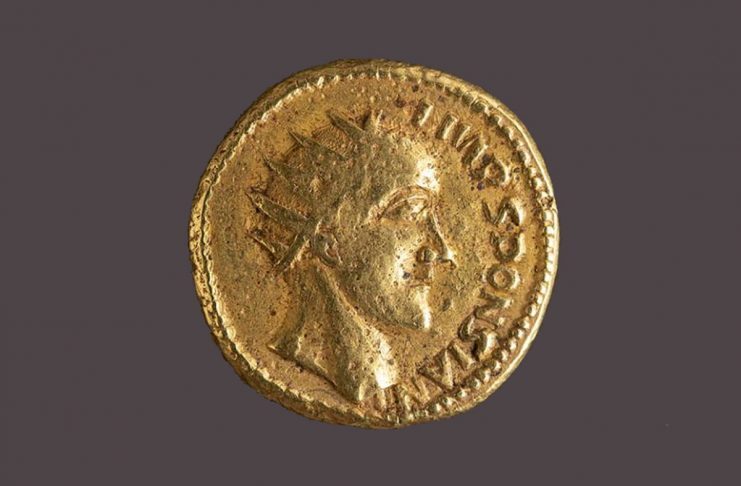
© The Hunterian, University of Glasgow
A ROMAN COIN, PREVIOUSLY THOUGHT TO BE A FORGERY,
HAS NOW BEEN AUTHENTICATED AND DEPICTS A LONG-LOST ROMAN EMPEROR.A study led by the University College London (UCL) was researching a coin housed at The Hunterian collection at the University of Glasgow.
Researchers compared the coin with a handful of genuine coins of the same design, unearthed in 1713 in Transylvania, Romania.
The team found minerals cemented in place by silica on the coin's surface, indicating that it was buried over a long period of time and then exposed to air. The coin also showed a pattern of wear, suggesting that it was in active circulation during the Roman period.
The coin depicts a
previously unknown emperor named Sponsian, who may have been a local army officer forced to assume supreme command in the Roman province of Dacia, a territory overlapping with modern-day Romania. Archaeological studies suggest that the region was cut off from the rest of the Roman empire around AD 260, before being evacuated between AD 271 and 275.
Coinage has always been an important symbol of power and authority. Recognising this, and unable to receive official issues from the mint in Rome, Sponsian seems to have authorised the creation of locally produced coins, some featuring an image of his face, to support a functioning economy in his isolated frontier territory.
Lead author Professor Paul N. Pearson (UCL Earth Sciences) said: "Scientific analysis of these ultra-rare coins rescues the emperor Sponsian from obscurity. Our evidence suggests he ruled Roman Dacia, an isolated gold mining outpost, at a time when the empire was beset by civil wars and the borderlands were overrun by plundering invaders."
Only four coins featuring Sponsian are known to have survived, all apparently originally from the 1713 hoard. Another is in Brukenthal National Museum in Sibiu, Romania.
Curator of Numismatics at The Hunterian, Jesper Ericsson, said: "This has been a really exciting project for The Hunterian and we're delighted that our findings have inspired collaborative research with museum colleagues in Romania. Not only do we hope that this encourages further debate about Sponsian as a historical figure, but also the investigation of coins relating to him held in other museums across Europe."
Reference:Authenticating coins of the 'Roman emperor' Sponsian
And as if shouting (all caps) would add any credibility to the claim. Parchment, paper document (including books) and paintings forgers know very well how to make their stuff look old and create all the hallmarks of "aging" in a few says or weeks.
One can safely assume metal work forgers are equally smart.